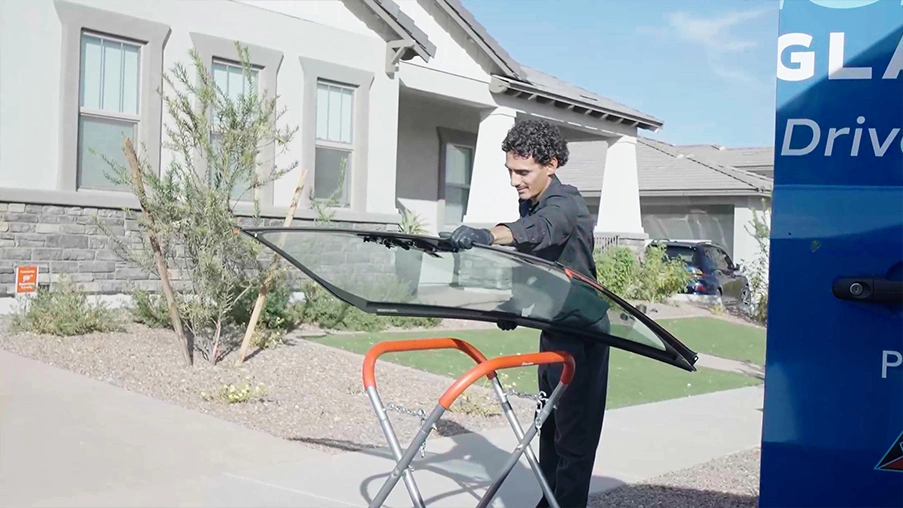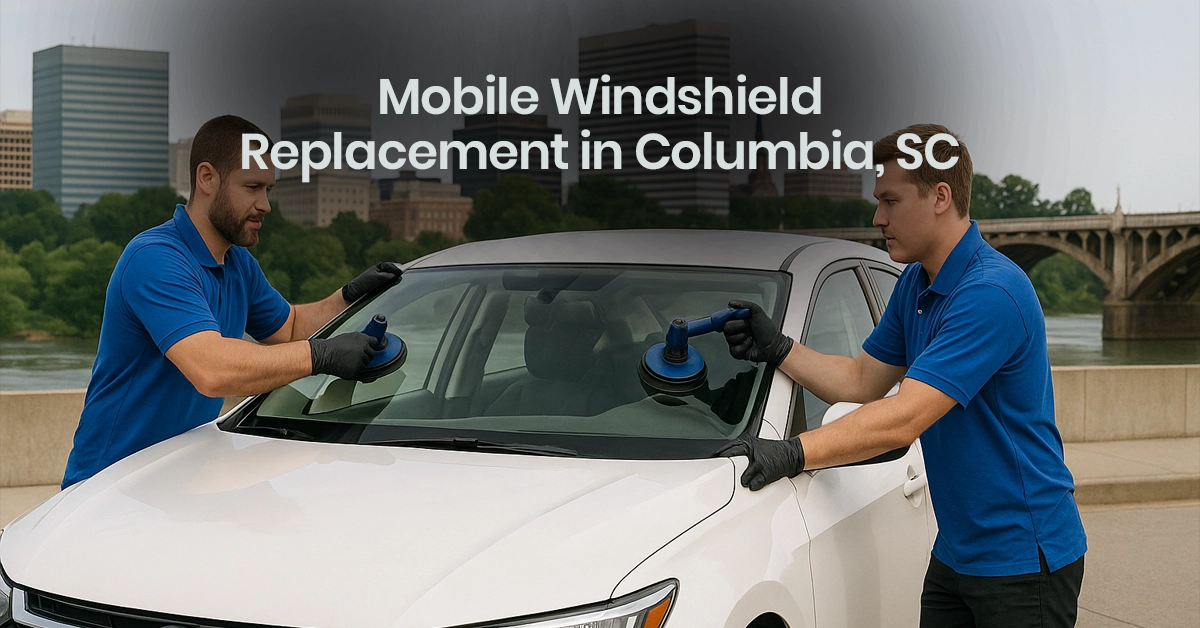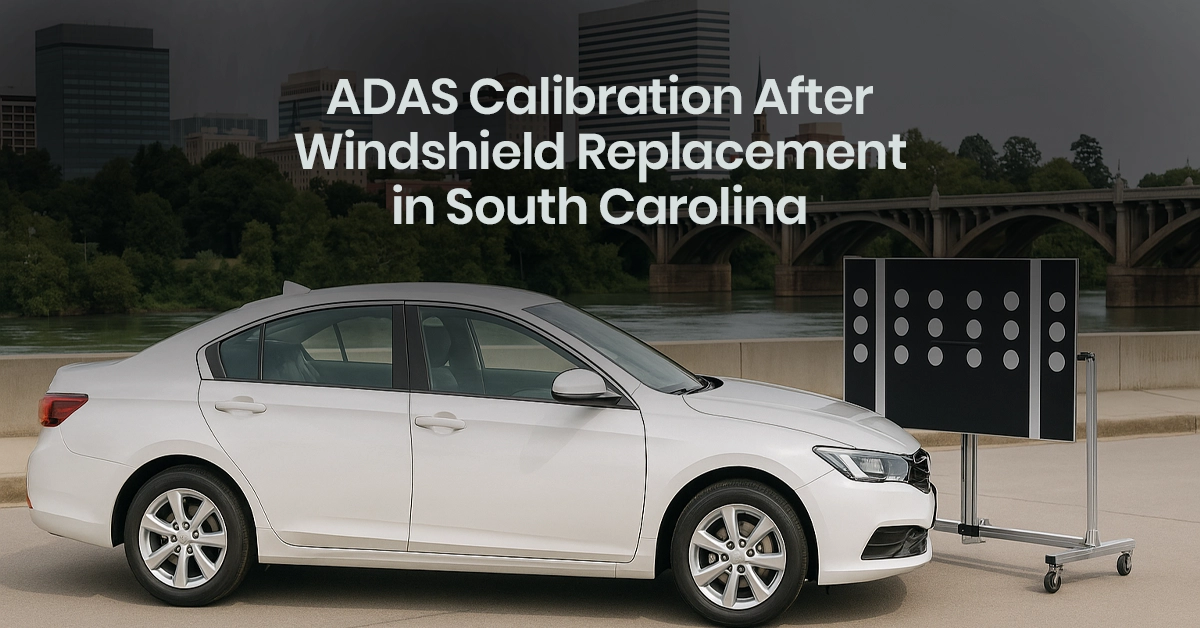How Long Does a New Windshield Need to Cure
January 10, 2025
New windshield installation is a delicate procedure. After getting your car window repaired & replaced, you must ensure that the experts return the structural integrity to your car, work on ADAS calibration, and do their best to enhance your safety.
Most importantly, it is significant to understand the process of windshield repair and installation. An important step is the curing period, which is necessary for the adhesive to dry out.
The windshield repair curing process ensures the windshield’s safety and works appropriately in the event of a collision or accident. It is critical for anyone wanting car window repair & replacement to learn how long a new windshield needs to be cured!
This knowledge will allow you to know better its implications in ADAS calibration. Now, let us dig deep into this vital knowledge!
What is Windshield Repair Curing?
Windshield repair curing is the process by which the adhesive used to place the windshield dries and sets the glass onto the vehicle’s frame. This process ensures that the windshield is durable and safe.
The majority of modern windshields are fitted using urethane adhesives, which form a strong bond that can endure a lot of force. However, these adhesives must have a certain length of time. This time is also called the “safe drive-away time” which allows the new windshield replacement to cure completely.
A good cure would allow the windshield to withstand every pressure of regular driving, uphold the structural integrity of the vehicle, and permit the ADAS calibration features to operate correctly.
Factors Affecting the Curing Time of a Windshield Repair
The amount of time needed for a newly installed windshield to cure depends upon several aspects. Here’s a detailed description of them:
1. Adhesive Used
The decision to use what adhesive type will determine the curing time. Quick-drying adhesives, also known as high-tech adhesives, can cure very quickly. They enable a safe drive-away time of 30 minutes to an hour. Conventional adhesives need up to 24 hours for complete curing. Always seek details from your technician.
2. Temperature and Humidity
Curing time is heavily dependent on the environment. Warm temperatures speed up curing, as they are considered conducive to adhesive bonding. Chilly weather conditions cause a slower cure, which requires more time. High humidity contributes to better curing, but low humidity may prolong it.
3. Type of Vehicle
The type and configuration of your vehicle may affect curing time. An average curing time is applied for sedans and compact cars. Trucks and SUVs may need special adhesives or application methods, which can change curing times. ADAS-equipped vehicles require more precise ADAS calibration, which can add to the overall repair time.
Safety Precautions During Curing
Besides understanding how long a new windshield needs to cure, you must understand key guidelines that detail safety during this period:
1. Do Not Move the Vehicle Before the Safe Drive-Away Time
Driving a car before it has obtained a reasonable curing period will weaken the bond formed between the windshield and the car body framework. This affects the structural integrity of the windshield and might lead to hazards in case of impacts or collisions.
2. Avoid Taking Your Car-to-Car Washes
The high pressure and chemicals of the car wash may interfere with the curing. They can also prevent the adhesive from bonding appropriately. This could lead to leakage or even a completely loose windshield. For a good cure:
- Avoid automatic car washes for at least 48 hours after windshield replacement.
- If you need to clean your car, wipe the outside with a damp cloth without touching the windshield.
3. Reduce Vibrations
Vibrations or impacts can shift the adhesive and reduce its bond to the car frame. To guard the curing process:
- Avoid slamming doors because sudden pressure can displace the adhesives
- Drive cautiously on smooth roads.
- Avoid potholes or other kinds of terrains
- Avoid putting heavy things on or next to the windshield, which may vibrate.
4. Keep the Windows a Little Open
Keeping windows a little bit open helps equilibrate pressure inside the car. This can reduce strain on the bonding adhesive. In fact, during temperature changes or while moving, this proves to be one of the key considerations. To do this optimally:
- Roll down your windows about an inch for the first 24-48 hours
- Avoid a very strong air conditioner or heater since this may quickly change pressure levels.
5. Park in Areas That Have a Controlled Environment
The curing process is extremely sensitive to environmental conditions. Parking in a controlled space ensures ideal curing by safeguarding the bonding agent against extreme weather. Tips for optimal curing:
- Park in a garage or covered area to protect the windshield from direct sunlight, rain, or snow
- If parking outdoors, use a windshield cover to minimize the exposure to temperature fluctuation.
- Avoid parking in areas that are too windy or dusty, as this may interfere with the adhesive.
6. Watch for ADAS Calibration
Advanced Driver Assistance Systems require precise sensor and camera calibration, which may be altered during windshield replacement. To retain these life-critical safety functions:
- Seek an ADAS calibration from an expert and well-trained technician after the installation.
- Ensure cameras and sensors are appropriately aligned to maintain functionality.
7. Check Installation
Upon completion of the installation, verify the windshield and adhesives were installed correctly. Ensure:
- Your technician inspects everything meticulously before returning the vehicle to you.
- No gaping, leaks, or uneven surfaces adjacent to the windscreen.
- Report all concerns right away.
By following these safety measures, you will have the assurance of proper curing for your windshield for maximum protection and the preservation of your car’s structural integrity.
Conclusion
Car window repair and replacement are serious steps, and the curing process for a windshield repair is also quite significant. One must learn how long a new windshield needs to be cured, the need for proper ADAS calibration, and the importance of getting a new windshield replaced only by experts to ensure both safety and functionality.
NuVision Auto Glass handles all your windshield repair and replacement needs. The experts utilize the best technology, excellent technicians, and a customer service-oriented approach. Contact us today to schedule service and drive safely!
Frequently Asked Questions
How long does a new windshield need to cure?
A windshield is generally cured between 24 and 48 hours after installation. The curing time depends on the type of adhesive applied, the type of vehicle, and environmental factors such as temperature and humidity.
How long must a new windshield replacement rest before driving?
Depending on the adhesive, the safe drive-away time ranges from 30 minutes to several hours. Always verify with your technician.
How long after windshield replacement can it get wet?
To ensure proper curing, it is recommended that the windshield be kept away from water, such as car washes or heavy rain, for at least 24 to 48 hours after car window repair and replacement.







